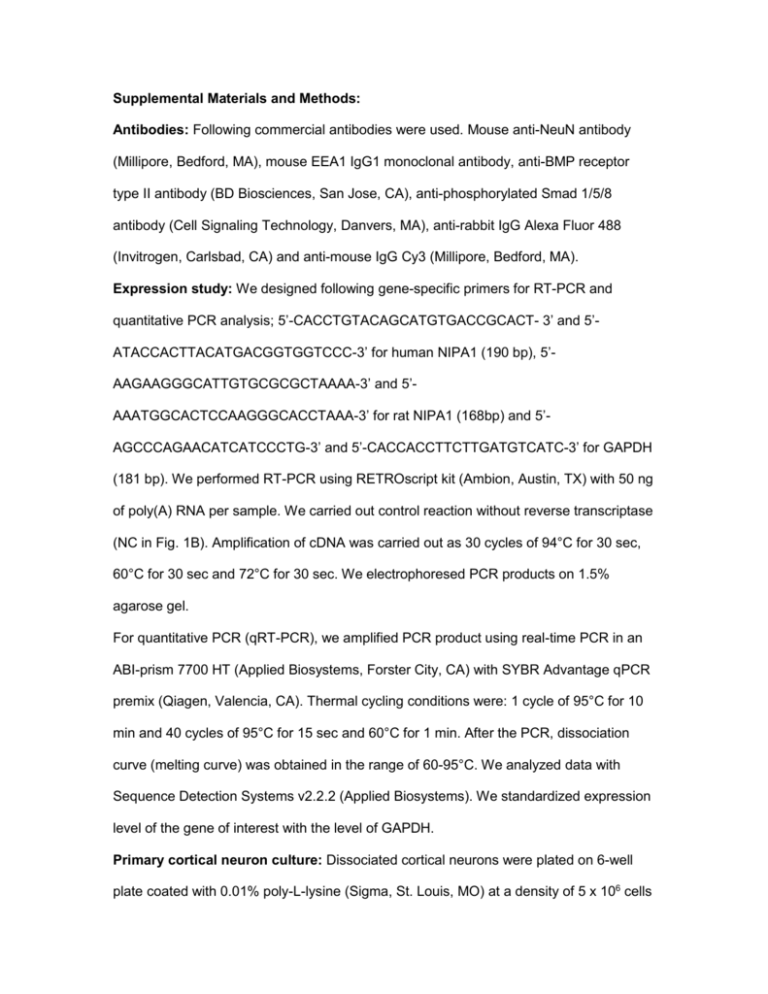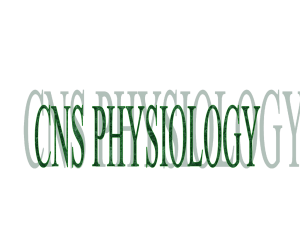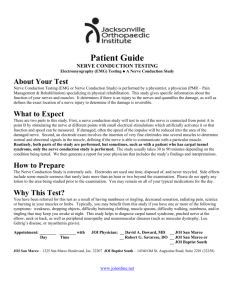Supplemental Materials and Methods: Antibodies: Following
advertisement

Supplemental Materials and Methods: Antibodies: Following commercial antibodies were used. Mouse anti-NeuN antibody (Millipore, Bedford, MA), mouse EEA1 IgG1 monoclonal antibody, anti-BMP receptor type II antibody (BD Biosciences, San Jose, CA), anti-phosphorylated Smad 1/5/8 antibody (Cell Signaling Technology, Danvers, MA), anti-rabbit IgG Alexa Fluor 488 (Invitrogen, Carlsbad, CA) and anti-mouse IgG Cy3 (Millipore, Bedford, MA). Expression study: We designed following gene-specific primers for RT-PCR and quantitative PCR analysis; 5’-CACCTGTACAGCATGTGACCGCACT- 3’ and 5’ATACCACTTACATGACGGTGGTCCC-3’ for human NIPA1 (190 bp), 5’AAGAAGGGCATTGTGCGCGCTAAAA-3’ and 5’AAATGGCACTCCAAGGGCACCTAAA-3’ for rat NIPA1 (168bp) and 5’AGCCCAGAACATCATCCCTG-3’ and 5’-CACCACCTTCTTGATGTCATC-3’ for GAPDH (181 bp). We performed RT-PCR using RETROscript kit (Ambion, Austin, TX) with 50 ng of poly(A) RNA per sample. We carried out control reaction without reverse transcriptase (NC in Fig. 1B). Amplification of cDNA was carried out as 30 cycles of 94°C for 30 sec, 60°C for 30 sec and 72°C for 30 sec. We electrophoresed PCR products on 1.5% agarose gel. For quantitative PCR (qRT-PCR), we amplified PCR product using real-time PCR in an ABI-prism 7700 HT (Applied Biosystems, Forster City, CA) with SYBR Advantage qPCR premix (Qiagen, Valencia, CA). Thermal cycling conditions were: 1 cycle of 95°C for 10 min and 40 cycles of 95°C for 15 sec and 60°C for 1 min. After the PCR, dissociation curve (melting curve) was obtained in the range of 60-95°C. We analyzed data with Sequence Detection Systems v2.2.2 (Applied Biosystems). We standardized expression level of the gene of interest with the level of GAPDH. Primary cortical neuron culture: Dissociated cortical neurons were plated on 6-well plate coated with 0.01% poly-L-lysine (Sigma, St. Louis, MO) at a density of 5 x 106 cells per well, and cultured in Neurobasal-A medium with 2% B27 supplement, 5% fetal bovine serum, 0.5mM L-glutamine, and 50 microgram/ml Gentamycin (Life Technologies, Rockville, MD) for 24 hours, and then cultured in the same medium without fetal bovine serum in a humidified incubator with 5% CO2 at 37°C. Half of the culture medium was changed every 2-3 days with fresh medium. Cultured neurons at days in vitro (DIV) 7 were transfected with 200 pmol/well small interference RNA (siRNA) by magnetofection using NeuroMag transfection reagent (OZ Biosciences, Marseille, France) according to the manufacturer’s instruction and harvested at DIV 10. Two sets of siRNA against rat NIPA1 were synthesized by Invitrogen Life Technologies (Stealth RNAi). For control siRNA, Stealth RNAi Negative Control kit (Life Technologies) was used. Sequences for RNA oligonucleotides used for targeting rat NIPA1 were as follows; NIPA1 siRNA1:5’-UUCCCACGGAGACAGUUGUAAAUCC-3’ and NIPA1 siRNA2: 5’AAUGGAUGAUCAGCACGACAGACCC-3’. For phosphorylated Smad assay, we applied BMP-9 (10ng/ml; R&D Systems, Minneapolis, MN) or vehicles added on cultured neurons at DIV 5. Cells were harvested for western blot analysis at different time points. Behavioral studies: We trained male rats starting at 3 weeks of age for both horizontal ladder gait and inclined grid climbing analyses. Once we confirmed that rats could perform tasks consistently (usually after 2 weeks’ training sessions; 5 weeks of age), we began data acquisition. Examiner coded all the digital video clips and scorers were blinded to genotype. For horizontal ladder gait analysis, the examiner tested rats weekly over the horizontally placed ladder (50 rungs) with video recording. Scorers reviewed coded video clips to count the number of falls. Falls were determined by the misplacement of hind limb(s) between rungs. For inclined grid climbing analysis, examiner placed rats once a week on metal grid at different angles (45, 60, 75 and 90 degree) with video recording. Successful climbing was determined by the complete elevation to the top of platform consisting of smooth Plexiglas® (Altuglas International, Bristol, PA). Neuropathological studies: Semi thin and ultrastructural analyses. Rats were terminally anesthetized with i.p. injection of pentobarbital and killed by cardiac perfusion, with 4% paraformaldehyde followed by 5% glutaraldehyde both in 0.1 M phosphate buffer. Lumbar and sacral segments of spinal cord, dorsal root ganglia from L4-S1 levels, mid-sciatic and distal tibial nerves, soleus, lumbrical and intrinsic foot muscles were removed under a dissecting microscope. These tissues were dissected into small blocks and were processed for plastic embedding using standard methods established (1). Thick (1 µm) sections were stained with toluidine blue and selected blocks were sectioned and examined in an electron microscope (Hitachi H7650, Hitachi High Technologies America, Dallas, TX). Additional spinal cord segments and brain, fixed in 10% formalin were processed for paraffin embedding. Immunohistochemistry: Rats were perfused with 4 % paraformaldehyde in 0.1 M phosphate buffer. Spinal cord and brain were removed, kept in 30% sucrose overnight and frozen in isopentane cooled in liquid nitrogen. Ten µm sections were kept in 4% paraformaldehyde in PBS containing 0.5% Triton X-100 (PBS-T) for 15 minutes, washed twice in 1X PBS for 5 minutes at room temperature. Antigen retrieval of frozen tissue was done in 3% H2O2 in PBS-T using a humidified chamber at room temperature for 30 minutes. Sections were then incubated in the blocking solution [10% normal goat serum (GS) in PBS-T] for 1 hour. Primary antibody incubation in PBS-T with 2% GS for 1 hour at RT included: Rabbit NIPA1 polyclonal antibody (1:1000); Mouse NeuN antibody (1:1000), Mouse EEA1 IgG1 monoclonal antibody (1:2000). Sections were washed twice with 1X PBS for 5 minutes. Secondary antibody incubation in PBS-T with 2% GS for 1 hour at RT contained anti-rabbit IgG Alexa fluor 488 (1:500) and anti-mouse IgG Cy3 (1:500). Sections were washed twice with 1X PBS for 5 minutes and mounted with Vectashield mounting medium. Representative images have been acquired using Zeiss 710 Meta Confocal microscope (Carl Zeiss Microscopy, LLC, Thornwood, NY) using 40X oil objective. Electrophysiologic analysis: Electrophysiology: Rats were anesthetized using inhaled isoflurane. Temperature was monitored using rectal and limb temperature probes (RET-2-ISO and IT-18) (Braintree Scientific, Braintree, MA). Using a heating lamp and a circulating warm water pad placed under the rat temperatures were maintained at 34.2-37.8°C (rectal) and 34.5 – 38.6°C (limb). Hair was removed from the hindlimb and tail using electric clippers and depilatory cream. Nerve conduction studies were performed using an electrodiagnostic system (Synergy EMG machine version 9.1, Oxford Instruments, Abingdon, UK). Distance for electrode placement was measured using a compass with a needle edge and a millimeter-graduated tape measure. The amplitudes and conduction velocities were determined for each nerve studied. Orthodromic sensory and motor conduction studies of the tail nerve were performed similar to that previously described (2). During the orthodromic tail sensory studies, the filter settings were set at 20 Hz for the low pass and 2 kHz for the high pass. Two pairs of ring electrodes (Alpine Biomed, Skovlunde, Denmark) were used for supramaximal stimulation and recording. The active and reference recording ring electrodes were placed at the base of the tail separated by 10 mm. The tail sensory nerve was stimulated with a pair of ring electrodes placed 40 mm distally. During the tail motor conduction studies the low pass filter was set at 3Hz and the high pass filter at 10 kHz. A pair of stimulating ring electrodes was placed at the base of the tail for the proximal stimulation site. The recording ring electrodes were placed 40 mm distally. For distal stimulation the stimulating electrodes were moved 20 mm distally (20 mm proximal to the recording electrodes). Sciatic motor nerve conduction studies were performed using a technique modified from the mouse (3,4). The low pass filter was set at 20 Hz, and the high-pass filter was set at 10 kHz. The active recording ring electrode and reference recording ring electrode (Alpine Biomed, Skovlunde, Denmark) were placed over the gastrocnemius muscle and Achilles tendon, respectively. The sciatic nerve was stimulated supramaximally with needle electrodes (Ambu USA, Glen Burnie, MD) at proximal and distal sites (10 mm proximal to the recording site at the midline of the posterior thigh and then 20 mm more proximal at the medial gluteal region). In situ mRNA hybridization: We cloned partial human NIPA1 cDNA using PCR primers 5’-GAGGTACTTCCTATTTAAC-3’ and 5’CAAGCTCCTATTGCAATCTCGAGGTCTGTTTTCATATTAG-3’ onto pBluescript SKII to make riboprobe template vector. After linearization of template vector, riboprobes (sense and antisense probes) were labeled with digoxigenin-UTP using DIG RNA labeling kit (T7 and T3 RNA polymerase, respectively). Frozen sections were prepared and hybridized with riboprobes at 60°C for overnight as floating sections. Hybridized probes were detected by alkaline phosphatase conjugated anti-digoxigenin antibody and NBT/BCIP (nitro blue tetrazolium/5-bromo-4-chloro-3-indolyl-phosphate). References: 1. Sahenk Z, Mendell JR. Ultrastructural study of zinc pyridinethione-induced peripheral neuropathy. J Neuropathol Exp Neurol 1979;38:532–50. 2. Kurokawa K, de Almeida DF, Zhang Y, et al. Sensory nerve conduction of the plantar nerve compared with other nerve conduction tests in rats. Clin Neurophysiol 2004;115:1677–82. 3. Xia RH, Yosef N, Ubogu EE. Dorsal caudal tail and sciatic motor nerve conduction studies in adult mice: technical aspects and normative data. Muscle Nerve 2010;41:850–6. 4. Srivastava AK, Renusch SR, Naiman NE, et al. Mutant HSPB1 overexpression in neurons is sufficient to cause age-related motor neuronopathy in mice. Neurobiol Dis 2012;47:163–73.






